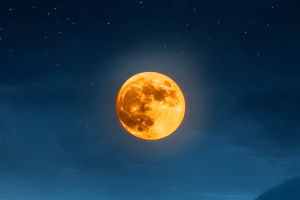Have you ever dreamed of seeing the northern lights dance across the sky? Those colorful ribbons of green, purple, and red swirling above snow-covered landscapes feel almost magical.
But behind this breathtaking sight lies a fascinating mix of science, solar energy, and Earth's invisible shield.
If you're curious about what really causes the aurora borealis, you're in for a treat—because the answer takes us from the surface of the sun all the way to the upper edge of Earth's atmosphere.
What Exactly Are the Northern Lights?
The northern lights, or aurora borealis, are colorful light displays that appear mostly near the Earth's magnetic poles. These lights aren't just pretty—they're actually the result of energy from the sun colliding with particles in Earth's atmosphere.
There is also a southern version of this phenomenon, called the aurora australis or southern lights, which occurs near the South Pole. Both types are part of the same scientific process and are more common in regions closer to the magnetic poles, such as Alaska, Norway, Canada, and Antarctica.
It Starts with the Sun
The process behind auroras begins with the sun. Our star is constantly sending out a stream of charged particles called the solar wind. This wind is made up of electrons and protons moving at extremely high speeds—sometimes more than a million miles per hour.
When the sun becomes more active (especially during solar flares or coronal mass ejections), it sends out extra bursts of these charged particles. Some of them travel toward Earth and eventually interact with our planet's magnetic field.
Earth's Magnetic Field Plays a Key Role
Thankfully, Earth has a strong magnetic field, like an invisible shield, that protects us from most of the solar wind. However, at the poles, the field lines curve inward, and the charged particles can sneak through and enter the upper parts of the atmosphere.
These particles then collide with gases like oxygen and nitrogen, transferring energy and causing the gases to glow. It's very similar to how neon lights work—electrons excite gas particles, which then release energy as colorful light.
Why So Many Colors?
The colors of the northern lights depend on two main factors:
1. Which gas is being hit
2. How high in the atmosphere the collision happens
• Green is the most common color and comes from oxygen at about 100–300 km above the ground.
• Red appears when oxygen is hit even higher up, over 300 km.
• Purple, pink, and blue often come from nitrogen and are seen lower in the sky.
Each of these colors comes from a specific chemical reaction, and the combination of heights and gases creates the beautiful shifting patterns we see.
Why Are They More Common Near the Poles?
The Earth's magnetic field is shaped like a donut, with the field lines meeting near the poles. This is why most auroras are seen in areas within the “auroral oval”—a ring-shaped zone around the North and South Poles.
Even though auroras are usually only visible in places like Norway or Canada, during intense solar activity, they can sometimes be seen much farther south—even in parts of the northern U.S., Europe.
Can We Predict Auroras?
Yes, to some extent! Thanks to satellites and space weather monitoring systems like those from NASA and the European Space Agency, scientists can track solar activity and forecast auroras a few days in advance.
Websites and apps now provide real-time aurora forecasts based on geomagnetic storm alerts. If you've ever wanted to see the northern lights, watching these forecasts can help you know when and where to look.
Are Auroras Dangerous?
For most people, the northern lights are completely harmless. In fact, they're just light shows in the sky and don't affect us directly on the ground.
However, when solar activity is very strong, it can cause geomagnetic storms that interfere with GPS systems, satellites, and even power grids. That's why scientists continue to study the aurora—not just for beauty, but also for practical reasons.
What Do Experts Say?
NASA's Goddard Space Flight Center explains that auroras are “visible reminders that our planet is connected to the sun by a complex system of magnetic and electric energy.” Research teams like those behind the THEMIS mission and ESA's Swarm satellites help monitor how solar wind energy flows into Earth's atmosphere, allowing better predictions and deeper understanding.
Scientists are even exploring how auroras might exist on other planets—Jupiter, Saturn, and even Uranus show similar aurora activity, offering clues about their atmospheres and magnetic fields.
Best Places and Times to See the Lights
If seeing the aurora borealis is on your bucket list, aim to visit between September and March, when nights are longest in the Northern Hemisphere. Popular destinations include:
• Tromsø, Norway
• Fairbanks, Alaska
• Yellowknife, Canada
• Reykjavik, Iceland
• Northern Finland or Sweden
Be sure to check aurora forecast websites and look for clear, dark skies away from city lights.
The next time you see pictures of green and pink lights rippling through the sky, remember—you're looking at the result of cosmic forces that began 93 million miles away. The aurora isn't just beautiful—it's a reminder of our planet's place in the solar system and its constant interaction with the sun.
Have you ever seen the northern lights in person? If not, would you travel to catch a glimpse? Let's talk about your aurora travel goals—maybe the next sky show is closer than you think!


